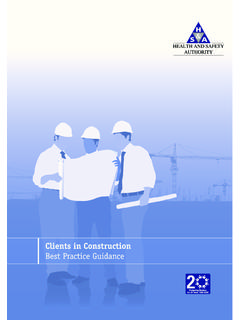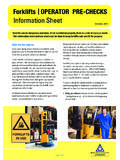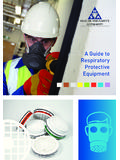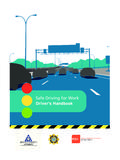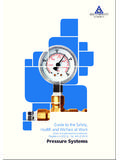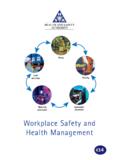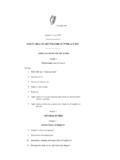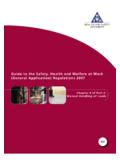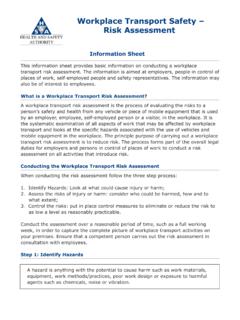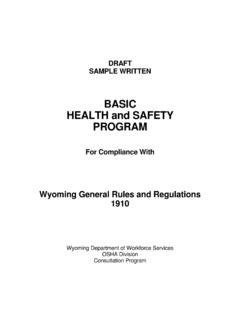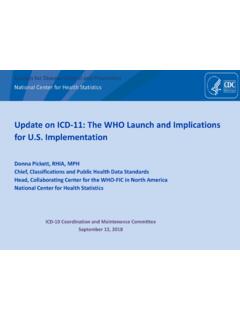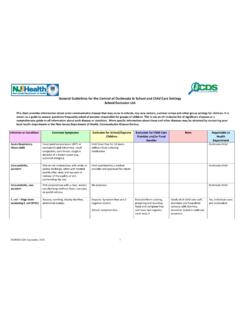Transcription of Guidance on the Management of Manual Handling in the …
1 Guidance on the Managementof Manual Handling inthe Workplace 10 Guidance ON THE Management OF Manual Handling IN THE WORKPLACE1 Guidance on the Managementof Manual Handling inthe WorkplacePublished in June 2005 by the Health and Safety Authority, 10 Hogan Place, Dublin 2. All rights reserved. No part of this publication may be reproduced, stored in a retrieval system,or transmitted in any form or by any means, electronic, mechanical, photocopying, recording or otherwise, without theprior permission of the Health and Safety 1-84496-023-4 Guidance ON THE Management OF Manual Handling IN THE WORKPLACE2 Table of Contents:Introduction_____3 The Extent of the Issue _____4 The Legislation_____6A Manual Handling Management Programme _____8 Element 1: Develop a Manual Handling Policy_____9 Element 2: Consultation _____12 Element 3.
2 Risk Assessment and Implementation of Controls _____13 Step 1:Identification of Tasks to be assessedStep 2: Development of a Risk Assessment ScheduleStep 3:The Risk Assessment ProcessStage 1: Task ObservationStage 2: Collection of InformationStage 3: Identification of Risk FactorsStage 4: Solution Development and Plan of ActionStage 5: Review Effectiveness of Control MeasuresElement 4: Training _____27 Element 5: The Role of Ergonomics in the design of work activity _____29 Conclusion_____30 Appendices_____31 Guidance ON THE Management OF Manual Handling IN THE WORKPLACE3 Introduction:This Guidance outlines the key parts of the Manual Handling of loads regulation and its relatedSchedule and it aims to give a better understanding of the risk factors associated with manualhandling.
3 These regulations are likely to be remade in 2005 without substantive changes. Theguidance underlines the need to put an effective Manual Handling risk assessment process inplace and it outlines the key stages of this process. This implies the need for proactiveergonomics input at the planning and design stage. It explains how Manual Handling can beavoided or reduced through better planning, consultation and systematic Management . Itprovides ideas for solutions to different Manual Handling problems. Not all the ideas will berelevant in all circumstances; different Manual Handling situations require different solutions,depending on the nature and extent of the risk.
4 It is not within the scope of this Guidance to cover in detail the area of back care managementand injury Management . These are necessary elements of back injury prevention, which need tobe considered but fall outside the realms of the Manual Handling Guidance is designed for all parties who play a part in managing Manual Handling risk andthese include designers, architects, manufacturers, suppliers, contractors, health and safetyprofessionals, safety representatives, employers and employees. The Authority would like to acknowledge the Health and Safety Executive (UK) for some ofthe images used in these ON THE Management OF Manual Handling IN THE WORKPLACE4 The Extent of the Issue:The Manual Handling of loads regulation and its related schedule sets out a framework foremployers to reduce the risk of injury from Manual Handling activity.
5 It seeks to reduce the verylarge incidence of injury and ill health arising from the Manual Handling of loads at work. Theregulations place duties on employers in respect of their own employees. The main concern with Manual Handling activity is the increased risk of injury due to wear andtear on the back, especially on the lumbar intervertebral discs, (Grandjean 2000). Back injuriescan be painful and reduce one s mobility and can lead to long absences from work and in moderntimes are among the main causes of early disability. Almost every occupational setting requires some form of Manual Handling .
6 Space limitations,varied nature of the activity, and the reluctance to make substantial investment inmechanised/automated equipment are some of the reasons for not avoiding or reducing manualhandling (Mital 1998). Invariably, the abilities of individuals to perform these activities, eitherfrequently or occasionally are exceeded, resulting in severe chronic or acute data in Table 1below demonstrates that injuries due to Manual Handling make up asignificant percentage of non-fatal accidents reported to the Health and Safety Authority everyyear. Since 1993 injuries due to Manual Handling activity have been on the increase, and in2003, 34% of reportable accidents were injuries due to Manual Handling activity.
7 It is acceptedthat there are situations where the cause of injury may be multi-faceted, however the statistics do show a large incidence of injury due to Manual Handling 1:HSA Statistics 1993-2001: Injuries while Handling , lifting or carrying as a Percentage of Total non fatal injuries05101520253035Yr93Yr94Yr95Yr96Yr 97Yr98Yr99Yr00Yr01 Series1 Percentage % Guidance ON THE Management OF Manual Handling IN THE WORKPLACE5 These statistics are consistent with statistics across Europe including a report by the EuropeanFoundation for Living and Working conditions produced in 2001.
8 In 2000 The Foundationcarried out the Third European Survey and questioned 21,500 workers in face-to-face interviewson their working conditions. The most common work related health problem reported was backpain, which was reported by 33% of workers. It also reported that exposure to poorly designedwork environments, which involved carrying heavy loads, and working in awkward painfulpositions remains prevalent. An increasing proportion of workers are reporting work-relatedhealth problems. In this context the Health and Safety Authority developed a specific programme of work toassess the Management of Manual Handling in the workplace.
9 A key part of this programme wasthe completion of inspections across a number of sectors with a focus on Manual Handling . Areport on the findings of this inspection programme was submitted to the Health and SafetyAuthority Executive and board at the end of 2001. This report identified a number ofrecommendations including the need to develop new Guidance on Manual Handling Guidance document is focused on giving advice on managing Manual Handling in theworkplace. Guidance ON THE Management OF Manual Handling IN THE WORKPLACE6 The LegislationThe Safety Health and Welfare at Work (General Application) Regulations of 1993 are madeup of ten pieces of legislation and twelve schedules which relate to specific parts of thelegislation.
10 Part VI of these regulations transposes EU Council Directive 90/269/EEC on theminimum health and safety requirements for the Manual Handling of loads into Irish regulation is titled the Manual Handling of Loads Regulation. This regulation is likely tobe remade in 2005 without substantive changes. The main structure of the regulation is as setout below:REGULATION27 INTERPRETATION FORPARTVIIn this part, Manual Handling of loads means any transporting or supporting of a load by oneor more employees, and includes lifting, putting down, pushing, pulling carrying or moving aload, which by reason of its characteristics or unfavourable ergonomic conditions, involves risk,particularly of back injury, to definition of Manual Handling refers to unfavourable ergonomic OFERGONOMICS.
